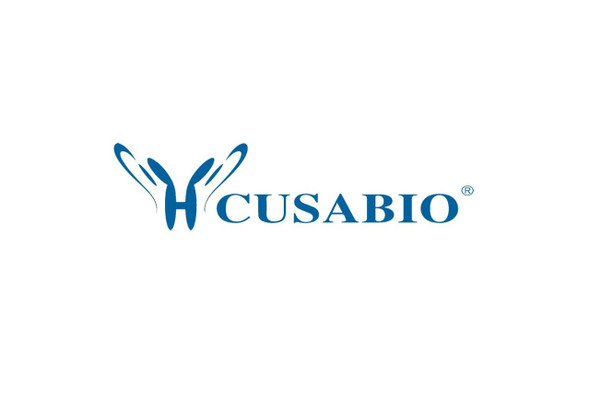Cusabio Arabidopsis thaliana Recombinants
Recombinant Arabidopsis thaliana Flavonol synthase/flavanone 3-hydroxylase (FLS1) | CSB-EP842601DOA
- SKU:
- CSB-EP842601DOA
- Availability:
- 3 - 7 Working Days
Description
Recombinant Arabidopsis thaliana Flavonol synthase/flavanone 3-hydroxylase (FLS1) | CSB-EP842601DOA | Cusabio
Alternative Name(s): FLS 1
Gene Names: FLS1
Research Areas: Others
Organism: Arabidopsis thaliana (Mouse-ear cress)
AA Sequence: MEVERVQDISSSSLLTEAIPLEFIRSEKEQPAITTFRGPTPAIPVVDLSDPDEESVRRAVVKASEEWGLFQVVNHGIPTELIRRLQDVGRKFFELPSSEKESVAKPEDSKDIEGYGTKLQKDPEGKKAWVDHLFHRIWPPSCVNYRFWPKNPPEYREVNEEYAVHVKKLSETLLGILSDGLGLKRDALKEGLGGEMAEYMMKINYYPPCPRPDLALGVPAHTDLSGITLLVPNEVPGLQVFKDDHWFDAEYIPSAVIVHIGDQILRLSNGRYKNVLHRTTVDKEKTRMSWPVFLEPPREKIVGPLPELTGDDNPPKFKPFAFKDYSYRKLNKLPLD
Source: E.coli
Tag Info: N-terminal 10xHis-tagged and C-terminal Myc-tagged
Expression Region: 1-336aa
Sequence Info: Full Length
MW: 43.3 kDa
Purity: Greater than 85% as determined by SDS-PAGE.
Relevance: Catalyzes the formation of flavonols from dihydroflavonols. It can act on dihydrokaempferol to produce kaempferol, on dihydroquercetin to produce quercitin and on dihydromyricetin to produce myricetin. In vitro catalyzes the oxidation of both enantiomers of naringenin to give both cis- and trans-dihydrokaempferol.
Reference: "Knock-out mutants from an En-1 mutagenized Arabidopsis thaliana population generate phenylpropanoid biosynthesis phenotypes." Wisman E., Hartmann U., Sagasser M., Baumann E., Palme K., Hahlbrock K., Saedler H., Weisshaar B. Proc. Natl. Acad. Sci. U.S.A. 95:12432-12437(1998)
Storage: The shelf life is related to many factors, storage state, buffer ingredients, storage temperature and the stability of the protein itself. Generally, the shelf life of liquid form is 6 months at -20?/-80?. The shelf life of lyophilized form is 12 months at -20?/-80?.
Notes: Repeated freezing and thawing is not recommended. Store working aliquots at 4? for up to one week.
Function: Catalyzes the formation of flavonols from dihydroflavonols. It can act on dihydrokaempferol to produce kaempferol, on dihydroquercetin to produce quercitin and on dihydromyricetin to produce myricetin. In vitro catalyzes the oxidation of both enantiomers of naringenin to give both cis- and trans-dihydrokaempferol.
Involvement in disease:
Subcellular Location: Cytoplasm, Nucleus
Protein Families: Iron/ascorbate-dependent oxidoreductase family
Tissue Specificity: Expressed in young seedlings (at protein level). Expressed in roots, emerging leaves, shoot-root transition zone, trichomes, flowers and siliques. In cotyledons, expressed mostly on the adaxial side and only in guard cells on the abaxial side.
Paythway:
Form: Liquid or Lyophilized powder
Buffer: If the delivery form is liquid, the default storage buffer is Tris/PBS-based buffer, 5%-50% glycerol. If the delivery form is lyophilized powder, the buffer before lyophilization is Tris/PBS-based buffer, 6% Trehalose, pH 8.0.
Reconstitution: We recommend that this vial be briefly centrifuged prior to opening to bring the contents to the bottom. Please reconstitute protein in deionized sterile water to a concentration of 0.1-1.0 mg/mL.We recommend to add 5-50% of glycerol (final concentration) and aliquot for long-term storage at -20?/-80?. Our default final concentration of glycerol is 50%. Customers could use it as reference.
Uniprot ID: Q96330
HGNC Database Link: N/A
UniGene Database Link: UniGene
KEGG Database Link: KEGG
STRING Database Link: STRING
OMIM Database Link: N/A









